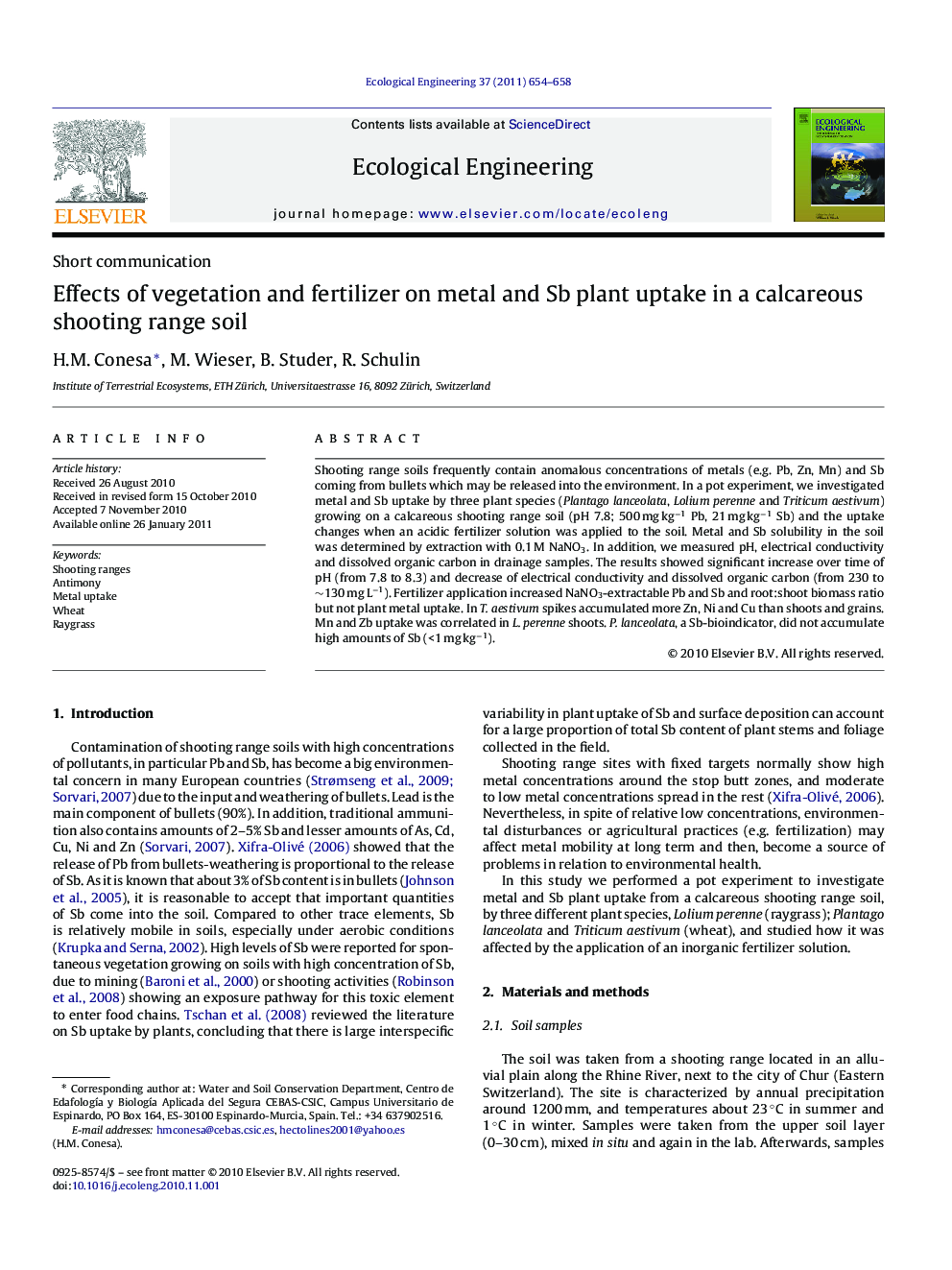| Article ID | Journal | Published Year | Pages | File Type |
|---|---|---|---|---|
| 4390305 | Ecological Engineering | 2011 | 5 Pages |
Abstract
Shooting range soils frequently contain anomalous concentrations of metals (e.g. Pb, Zn, Mn) and Sb coming from bullets which may be released into the environment. In a pot experiment, we investigated metal and Sb uptake by three plant species (Plantago lanceolata, Lolium perenne and Triticum aestivum) growing on a calcareous shooting range soil (pH 7.8; 500 mg kgâ1 Pb, 21 mg kgâ1 Sb) and the uptake changes when an acidic fertilizer solution was applied to the soil. Metal and Sb solubility in the soil was determined by extraction with 0.1 M NaNO3. In addition, we measured pH, electrical conductivity and dissolved organic carbon in drainage samples. The results showed significant increase over time of pH (from 7.8 to 8.3) and decrease of electrical conductivity and dissolved organic carbon (from 230 to â¼130 mg Lâ1). Fertilizer application increased NaNO3-extractable Pb and Sb and root:shoot biomass ratio but not plant metal uptake. In T. aestivum spikes accumulated more Zn, Ni and Cu than shoots and grains. Mn and Zb uptake was correlated in L. perenne shoots. P. lanceolata, a Sb-bioindicator, did not accumulate high amounts of Sb (<1 mg kgâ1).
Related Topics
Life Sciences
Agricultural and Biological Sciences
Ecology, Evolution, Behavior and Systematics
Authors
H.M. Conesa, M. Wieser, B. Studer, R. Schulin,
